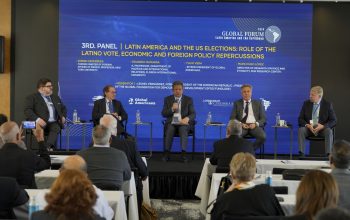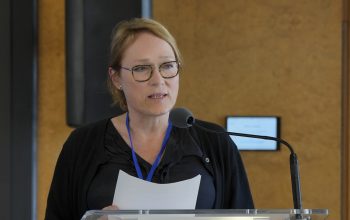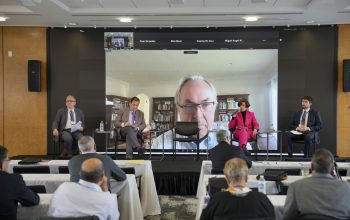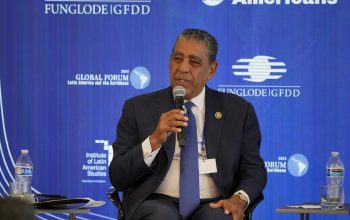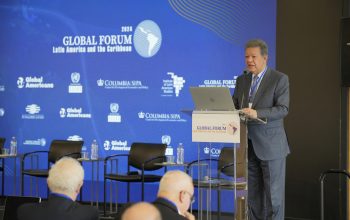news
“Institutional Democratic Revolution”, an article by Dr. Leonel Fernández
July 23, 2019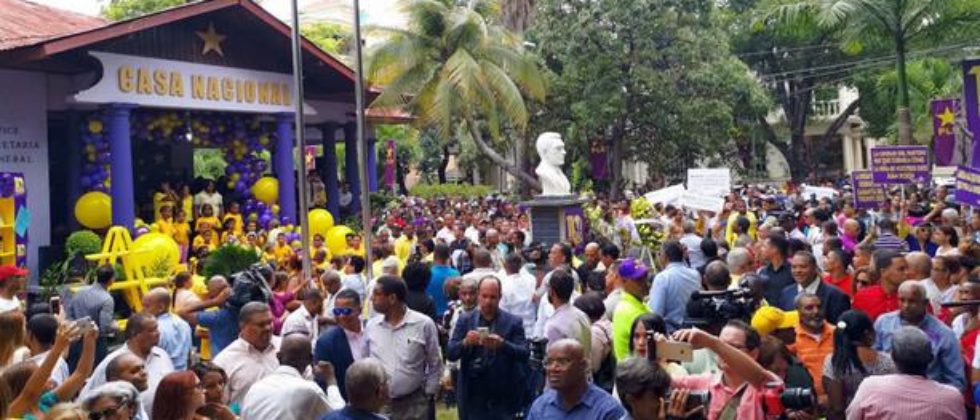
With its triumph in the congressional or midterm elections of 2006, the Dominican Liberation Party (PLD), for the first time, achieved a majority in both the Senate and the House of Representatives.
This allowed us, at that time, to maintain that as a result of those elections, a reencounter with history had occurred in the Dominican Republic, after its abrupt interruption in September 1963 with the coup d’etat of the administration of professor Juan Bosch.
We added, at the time, that with that electoral triumph Boschism, as a political expression, had again become the dominant line of thought in the national political spectrum.
Upon this happening, we proclaimed that the next step in the immediate term was to carry out an institutional democratic revolution. That revolution consisted of promoting reform and modernization of the Dominican state, as well as the execution of political reform so that the country could consolidate as a social and democratic state under the rule of law.
As part of that institutional democratic revolution, priority was given on the agenda to elaborating a comprehensive constitutional reform.
Following a trend that extended through several countries of Latin America as a result of their transition from authoritarian to democratic regimes, the need for a constitutional reform had been contemplated in our country since the 90s.
Unfortunately the reform that happened, in 1994, was not the result of a great national debate or a design conceived by a group of specialists on the subject, but rather emerged from the post-electoral crisis that emerged between the main contending parties of that time: the Social Christian Reformist Party (PRSC) and the Dominican Revolutionary Party (PRD).
Constitutional reform
The constitutional reform of 1994, upon slicing down to two years the presidential period corresponding to the four-year term ending in 1998, separated the presidential from the congressional and municipal elections, which are still maintained, albeit not as midterm elections.
That constitutional text was created by the National Council of the Magistracy, in virtue of which a college composed of representatives of the government””””s three branches selected judges to sit on the highest courts of the land.
But, as it was a reform of our Magna Carta in the context of a political crisis, it left open many gaps and inconsistencies—and even lacked a preamble, which is where the values and principles that characterize all modern constitutions are laid out.
Thus the debate on the need for a proper and comprehensive reform of our foundational document carried on, and the enthusiasm was such that passionate and burning controversies erupted over whether the reform should be on the basis of a Constitutive Assembly or a National Review Assembly.
Likewise, in 2001, a commission was created via presidential decree under the directives of the Mother and Teacher Pontifical Catholic University (PUCMM) and made up of several sectors from national life, with the aim of carrying out this reform.
The commission produced a report in 2002. Nonetheless, instead of accepting its recommendations, the sitting government proceeded to submit its own reform, which consisted exclusively of creating the conditions for presidential reelection.
In the face of the frustration created by that eviscerated reform of 2002, conditions were ripe for the PLD triumph in the 2006 Congressional elections to give way to the beginning of a proper and authentic national dialogue, with the aim of providing ideas and proposals for the much-longed-for new Constitution of the Dominican Republic.
And so it happened. In February 2007, from the heart of the Autonomous University of Santo Domingo (UASD), a general call was made for a popular consultation of political parties, business sectors, civic organizations, religious institutions, civil society organizations, trade unions, academic bodies, and society at large, with the aim of contributing to the design of a new constitutional architecture.
For two years, the country was immersed like never before in its history in a national crusade of debate, reflections, and exchange. In the end, owing to that memorable period of popular participation in setting up our destiny, Dominican democracy experienced a transformation: from a delegated or representative democracy to a participatory one.
Political reform
That constitutional reform, begun through a popular consultation to generate consensus across society, was proclaimed on January 26, 2010, on the 197th birthday of founding father Juan Pablo Duarte.
This constitutional reform, as mentioned, was part of a wider project of political reform, which would serve to promote the institutional democratic revolution.
The political reform included administrative and financial reform of the state, with the passing of new laws on government spending, treasury, and budget, as well as the creation of a Ministry of Revenue, a Ministry of Economy, Planning, and Development, and a Ministry of Public Administration.
The reform would also include the law on parties, the electoral law, and the law on public functioning; a communication code; and a culture code, which would include laws on filmmaking, audiovisual media, and the Internet and social networks; as well as everything related to the design and application of cultural policies.
Some of these projects still remain to be carried out. Nonetheless, the mere conception of them reveals that there was, from those times, a clear vision of the importance of the institutional dimension for national development.
The institutional democratic revolution that we aspired to with the PLD electoral triumph of 2006, which reinaugurated the historic process interrupted in 1963, had as its essential goal the elaboration of a 21st century Dominican Constitution.
In countries that enjoy a consolidated democratic state, the Constitution usually has some stability and permanence. It is not constantly changed. It is not subject to the particularistic interests of an electoral juncture. The Constitution, as the foundational law of the state, tends to enjoy a certain durability.
In Spain, after the post-Franco democratic transition, a new Magna Carta was proclaimed in 1978. Forty-one years have passed and in that Iberian country it’s never occurred to anyone to modify it. The same is true of the Latin American countries that joined the neoconstitutionalist wave in the 90s: Colombia, Chile, Uruguay, Argentina.
Not to mention the case of the United States. In that country the Constitution, created more than 200 years ago, has never been changed. Occasionally amendments have been added to it, but the original content is not touched.
Our Constitution of 2010, on the contrary, was modified five years later, in 2015, with the aim of allowing presidential reelection, and now in 2019, just four years later, the aim is to repeat that operation.
That, of course, represents a step backward with respect to the hope created with the PLD’s electoral triumph in the 2006 congressional elections to foster the longer-for institutional and democratic revolution.
May these hopes not disappear, but rather shine forever in the national consciousness.

